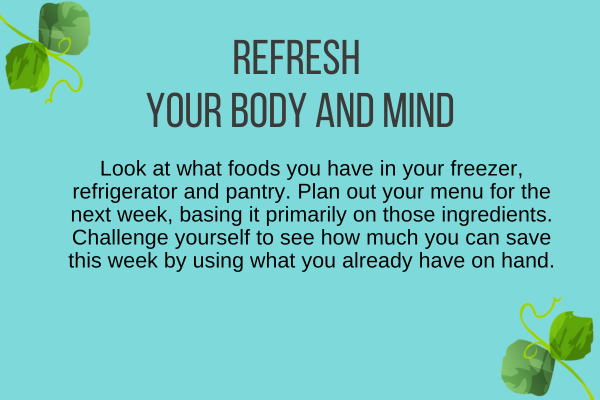Eating healthy doesn’t have to mean spending a fortune. With a little planning and creativity, you can enjoy nutritious meals without breaking the bank. Budget-friendly eating is all about making the most of affordable, nutrient-dense foods and adopting a few strategic shopping habits. Today, let’s dive into practical tips that help you eat well on a budget, empowering you to stay on track with your health goals while keeping costs in check.
Why Eating Healthy on a Budget Matters
Eating healthy has countless benefits, from boosting energy and mood to supporting overall wellness. However, the misconception that healthy eating has to be expensive can hold people back from prioritizing it. The good news is that with some intentional choices, it’s absolutely possible to eat nutritious meals while saving money. Let’s look at some strategies to help you get the most nutritional bang for your buck.
Plan Your Meals and Make a Shopping List
Planning meals ahead of time is one of the most effective ways to eat healthy on a budget. By creating a weekly meal plan, you can avoid impulsive buys and ensure that you’re using ingredients you already have. Once you’ve mapped out your meals, make a shopping list with everything you need. Stick to the list while you’re shopping to avoid buying unnecessary or expensive items.
Buy Whole Foods Instead of Processed Ones
Whole foods like fresh vegetables, fruits, grains, and lean proteins are typically more affordable and nutritious than processed or packaged foods. For instance, instead of buying pre-made salads or snack packs, buy the ingredients in bulk and prep them yourself. Whole foods generally come in larger quantities and can be used in multiple meals, helping you get more value for your money while avoiding added preservatives and sugars.
Shop Seasonal and Local Produce
Seasonal fruits and vegetables tend to be more affordable because they’re in abundant supply. They’re also often fresher and more nutrient-dense than off-season produce. It seems that produce from big box stores is getting poorer and poorer in quality (think green beans that have been sitting on the shelf so long that by the time you get your delivery, they’re slimy the next day). So check out your local local farmers’ market for seasonal deals, and stock up on these ingredients. If you find a good price on seasonal produce, consider freezing extras to use later. Local markets often have competitive prices and fresher options, making it easier to eat healthy on a budget.
Buy in Bulk Where Possible
Certain pantry staples, like rice, oats, beans, and nuts, are much cheaper when bought in bulk. Purchasing larger quantities of these items can reduce your per-unit cost, and they have a long shelf life, which makes them easy to store. Bulk stores and bulk sections in grocery stores are great options for stocking up on these essentials. When you have budget-friendly basics on hand, it’s easier to whip up nutritious meals without needing a special trip to the store.
Incorporate More Plant-Based Proteins
Meat can be one of the most expensive items on a grocery list, so consider incorporating more plant-based proteins like beans, lentils, chickpeas, and tofu. These alternatives are not only budget-friendly but also highly nutritious, offering fiber, vitamins, and minerals along with protein. Try making a vegetarian chili, lentil soup, or bean tacos to explore plant-based meals that are filling and affordable. Plus, plant-based proteins often have a longer shelf life, so they’re convenient for meal prep. Or, consider how you can use less meat and use it to flavor your meal, rather than it being the focal point.
Cook at Home and Repurpose Leftovers
Cooking at home is one of the easiest ways to save money while eating healthy. Preparing meals from scratch is usually cheaper and healthier than eating out or buying pre-made meals. When you cook at home, you have control over the ingredients, portions, and cooking methods, making it easier to create balanced, budget-friendly meals. And don’t forget to repurpose leftovers! Yesterday’s roasted veggies can be today’s salad topping or soup ingredient. Turning leftovers into new meals helps reduce food waste and maximizes your budget.
Embrace Affordable Superfoods
Eating healthy doesn’t mean you have to buy expensive superfoods. Many affordable, everyday foods are packed with nutrients. For example, oats are high in fiber, eggs are rich in protein, and sweet potatoes are loaded with vitamins. Other affordable superfoods include canned sardines, frozen berries, cabbage, and bananas. Embracing these budget-friendly, nutrient-dense options helps you meet your health needs without the need for pricey specialty items.

Eating healthy on a budget is all about making smart, intentional choices and focusing on nutritious foods that fit your financial goals. From meal planning and buying in bulk to exploring plant-based proteins, these strategies can help you enjoy a nourishing diet without overspending. Remember, healthy eating doesn’t have to be complicated or costly. Start with one or two of these tips, and see how easy it is to maintain a healthy, budget-friendly lifestyle that supports your well-being.

